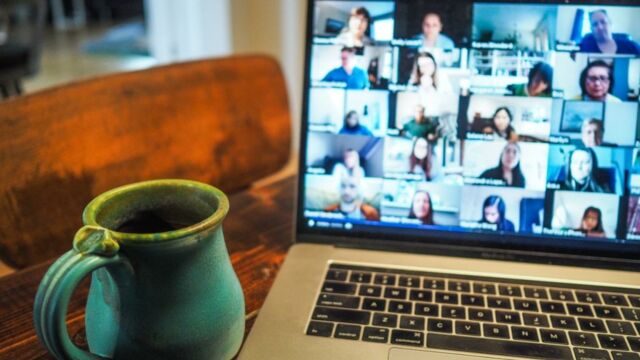Slang is an unofficial language that often sees some of its representatives become part of a country's official language. Sometimes it's expressions, sometimes it's words, and sometimes it's acronyms. While NSFW hasn't yet made it into the dictionary, it's getting a lot of use on social networks. Find out what it means and how it's used.
Discover our latest podcast
What does NSFW mean?
NSFW is a slang term used on the Internet, meaning 'Not Safe For Work'. Websites mentioning the acronym 'NSFW' usually contain profanity, nudity or sexuality. The term is used as a warning to users who do not wish to be seen accessing such content in public or... at work.
NSFW is therefore used as a warning label. Users who click on this kind of content are aware that they are coming across content that is not safe to watch or read in the presence of people under 18.
How do you use the term NSFW?
Let's take a situation for example. A person sends a daring gif by message to his friend who says:
Dude, why didn't you put nsfw on before sending the gif? I opened it in front of my internship tutor! You're overreacting.
Sorry, I didn't know you were at work... Otherwise I would have put NSFW!
The tutor then says:
I'll let it go this time since no one else saw it. Make sure it doesn't happen again!
Well, even if this incredible situation seems impossible, we know that the impossible can sometimes happen. The expression NSFW is often used on Reddit or X (ex-Twitter) to protect the young public above all, but inevitably also to please brands that don't want to be associated with content that isn't 'safe for work'. However, it is also very useful for streamers and youtubers who, when they make 'react' content on social networks, avoid the threat of their channel being banned for showing content that is a little too... daring.
Where does the expression NSFW come from?
The expression 'Not safe for work', abbreviated to NSFW, was first used on the Snopes forum, a British website set up to limit the spread of computer hoaxes and decipher fake news and rumours circulating on the Internet.
In 1998, on the Snopes forum, a woman warned users that children were present on the site and could easily access the content they shared. She advised users to post a warning so that children would know not to open content that wasn't suitable for them.
Forum members listened to her recommendations and began using the acronym 'NFBSK', short for 'Not For British School Kids'.
Years later, the acronym NSFW quickly evolved into the meaning it has today.
#NSFW: Brands use it indiscriminately
In 2016, KFC Australia backtracked on a very NSFW advertising campaign! The fried chicken restaurant chain posted a risqué tweet showing a woman and a man on a couch.
So far so good, only the man's crotch is blurred, while the woman appears to be touching him. The image is accompanied by the caption 'Warning: #NSFW. Something hot and spicy coming soon'. Obviously, the tweet caused a total bad buzz and the brand deleted its tweet after numerous complaints.
Drew Curtis, founder of fark.com (an American website), tried to register a trademark for this term, but his application was unsuccessful.
Read more:
⋙ Google issues warning over dangerous apps: 'Turn off' this setting in your account to stay safe
⋙ Fury over controversial milk advertisement depicting women as cows
⋙ These are all of the sneaky ways advertisers make food look 10 times better on film
This article has been translated from Gentside FR.















